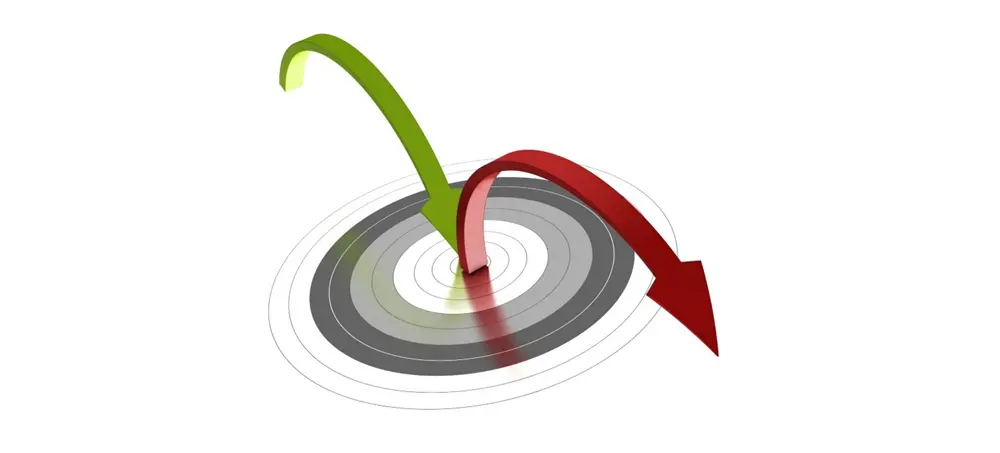Interpreting Bounce Rate and How to Reduce It

When managing a website, there’s a number you’ll likely see again and again in your analytics dashboard: bounce rate. For some, it’s a confusing metric—often misunderstood or misused. Yet understanding bounce rate and taking steps to optimize it can significantly influence your site’s overall performance, especially when it comes to user engagement, conversions, and even SEO. Whether you’re running a blog, e-commerce platform, or business site, knowing how bounce rate works and how to lower it is critical to building a high-performing digital presence.
What Is Bounce Rate?
Bounce rate refers to the percentage of visitors who land on a page of your website and leave without taking any further action. They don’t click a link, visit another page, or complete a conversion goal. Essentially, it measures single-page sessions.
For example, if 100 people visit your site, and 47 of them leave without interacting beyond the first page, your bounce rate is 47%. This number is especially important because it can offer insight into the relevance, usability, and engagement quality of your landing pages.
However, it’s crucial to note that a high bounce rate doesn’t always mean something is wrong. Sometimes, a visitor finds exactly what they need—say, a quick answer to a question—and then leaves. In other contexts, though, such as product pages or lead generation forms, a high bounce rate might signal lost opportunities.
Why Bounce Rate Matters
Bounce rate is more than just a vanity metric; it provides a snapshot of how well your website resonates with users. If visitors are leaving quickly, it may indicate issues such as:
- Poor content alignment with search intent
- Slow load times
- Cluttered or outdated design
- Lack of clear calls-to-action (CTAs)
- Technical problems on mobile devices
From a marketing standpoint, a consistently high bounce rate may weaken your conversion funnel. From a search engine perspective, it may reduce your site’s relevance in organic search rankings, especially as Google continues to emphasize user experience metrics.
Benchmarking Bounce Rate: What’s Considered Good?
There’s no one-size-fits-all answer to what constitutes a “good” bounce rate—it depends on your industry, traffic source, and page type. However, general benchmarks can serve as a helpful reference:
- 25%–40%: Excellent. This often applies to high-quality landing pages with clear user journeys.
- 41%–55%: Average. This is common for many websites, especially blogs or content-heavy platforms.
- 56%–70%: Concerning. This range can indicate structural or content-related issues.
- 70% and above: Critical. May require immediate attention, especially for high-priority pages like product or service pages.
Always contextualize your bounce rate based on where traffic is coming from. For instance, social media traffic often bounces more than email or direct visits because users are in “scroll mode,” not “search mode.”
Common Causes of a High Bounce Rate
Understanding what contributes to high bounce rates is the first step in reducing them. Below are some common culprits:
1. Slow Page Load Times
Visitors today have limited patience. If your page takes more than 3–5 seconds to load, many users will click away before they even see your content. Site speed is one of the biggest contributors to bounce rate and should be a top priority.
2. Misleading Meta Titles and Descriptions
If your page shows up in search results with a title and meta description that don’t reflect the actual content, visitors will feel tricked and leave. Clear, honest metadata ensures people know what to expect.
3. Poor Mobile Experience
With mobile users now making up a large portion of web traffic, mobile responsiveness is essential. Pinch-to-zoom, broken layouts, or oversized images can all contribute to a fast exit.
4. Weak or Unclear CTAs
If users don’t know what action to take next, they’ll often take none. Whether it’s reading more articles, downloading a guide, or purchasing a product, your CTAs must be both visible and persuasive.
5. Content That Doesn’t Match Search Intent
Even high-quality content will fail if it doesn’t answer the user’s query. Always align your page’s purpose with what your visitors are actually searching for.
6. Intrusive Popups or Auto-Play Videos
Few things repel visitors faster than aggressive popups or loud videos that play automatically. Use these elements sparingly, and ensure they don’t cover key content.
How to Reduce Bounce Rate Effectively
Now that we’ve covered what causes high bounce rates, let’s explore how to reduce them in a meaningful, sustainable way.
1. Improve Your Page Speed
Speed is foundational. Use tools like Google PageSpeed Insights, GTmetrix, or WebPageTest to identify performance bottlenecks. Compress images, enable browser caching, and minimize JavaScript where possible. For WordPress users, caching plugins like WP Rocket or W3 Total Cache can provide significant gains.
2. Optimize for Mobile Devices
Responsive design is no longer optional. Test your site on multiple screen sizes and devices. Use Google’s Mobile-Friendly Test to pinpoint issues. Consider simplifying your mobile navigation and minimizing on-page distractions.
3. Align Content With User Intent
Do some keyword research before creating any piece of content. Ask yourself: “What is the user hoping to find?” Then structure your page to answer that as quickly and clearly as possible. Use clear headings, bullet points, and engaging media to keep the user engaged.
4. Make Navigation Seamless
Simplify your menu. Add clear links to related posts or products. Use internal linking strategically so that users naturally flow from one page to the next. A well-structured website hierarchy encourages users to explore further.
5. Strengthen Your CTA Strategy
Each page should guide users toward a meaningful action. Use buttons, banners, or in-text prompts to nudge them forward. Whether it’s subscribing to a newsletter, scheduling a consultation, or adding a product to cart, the CTA should feel like a natural next step.
6. Use Engaging and Scannable Formatting
Walls of text can intimidate or bore visitors. Break up your content using:
- Headings and subheadings
- Short paragraphs
- Bullet points and numbered lists
- High-quality images and infographics
These formatting strategies make your page more digestible and visually appealing.
7. Add Interactive or Multimedia Elements
Videos, sliders, calculators, quizzes—interactive features can help keep visitors engaged longer. Just be careful not to overdo it or add distractions that compete with your main message.
8. Use Heatmaps and Session Recordings
Tools like Hotjar or Microsoft Clarity can help you visually analyze user behavior. You’ll see where people click, scroll, or get stuck. Use this data to make changes that reduce friction and encourage longer visits.
9. Regularly Test and Refine
A/B testing is your ally. Whether you’re tweaking a CTA color or rewriting a headline, ongoing experimentation allows you to discover what truly resonates with your audience. Even small changes can produce meaningful improvements.
Bounce Rate vs. Other Metrics
Don’t view bounce rate in isolation. It becomes more insightful when paired with other metrics like:
- Average time on page: Are people reading your content before leaving?
- Pages per session: Are visitors exploring beyond the landing page?
- Exit rate: Where are people leaving most often?
- Conversion rate: Are users taking the desired actions?
Together, these indicators paint a clearer picture of your site’s overall user experience and help you make smarter optimization choices.
Bounce rate is both a warning sign and a performance gauge. While a high bounce rate can point to problems with usability, content, or intent alignment, it also presents an opportunity. By identifying the friction points and smoothing them out, you’re not just reducing a number—you’re enhancing the user experience, increasing engagement, and laying a stronger foundation for long-term digital growth.
If your goal is to keep visitors on your site longer, encourage meaningful interactions, and guide them toward conversion, understanding and addressing bounce rate is an essential part of that journey. Continuous refinement, grounded in data and focused on user needs, will always pay off.



